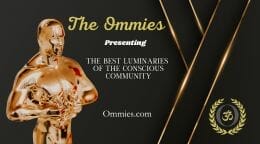Gospel of Thomas: The Way to Eternal Life
by Arthur Telling
Do You Seek the Way to Eternal Life?
The Gospel of Thomas, used by followers of Jesus in the early centuries but rejected by the Church, was lost to the ages until a 1945 discovery of its full text, buried in a jar under the Egyptian sand for 1600 years. Told by Jesus to his disciple, Didymos Judas Thomas, scholars consider this gospel one of Christianity’s great discoveries. Some believe it may be older than any of the four New Testament gospels of Matthew, Mark, Luke, and John. Composed of a list of 114 sayings of Jesus, some are similar or identical to those in the New Testament. Other Thomas sayings point to a very different message delivered by Jesus than what the Church embraces.
Saying of Jesus in the Gospel of Thomas
One of the more curious Thomas phrases is Saying 22. Within this Saying, Jesus tells his disciples to make “the two into one.” Then, more specifically, He says to “make the inner like the outer and the outer like the inner,” and “make the upper like the lower” and “the male and female into a single one.” This message is neither of salvation through devotion nor of salvation through the story of the Cross, which are at the forefront of the Christian message. It is, rather, a message of awakening the mind, similar to the Eastern philosophies and religions.
Method to Find the Way to Eternal Life
The somewhat-lengthy Saying 22 continues with more yet, offering a method for bringing the two into one, and for making the inner like the outer. Jesus instructs the disciples to “make eyes in place of an eye, a hand in place of a hand, a foot in place of a foot, an image in place of an image,” and upon doing so, “you will enter.” The teaching, as I interpret, is to bring together the various elements of the self. The mind constructs an inner version of the outer world, an imagined reality in place of the actual, experienced, physical world.
What Makes this Way Possible?
To make eyes in place of an eye recognizes the inner eye (the third eye). The physical eyes are a mere extension of it. Recreate in your mind a hand in place of your physical hand, and a foot in place of your physical foot. In making the inner like the outer and the outer like the inner, your imagination and physical being become one.
Next, extend this imagined-self outward. Picture the world that you see as a creation of your mind. Make an image in place of an image, be it walls and a ceiling or the sky and a meadow. Imagine it is your mind constructing the world that you see and experience. It is as though you are awake in a dream, or are seeing a vision. Your every movement will become more exacting and more precise, because you are directing your reality with forethought and exactitude.
In Sustaining the World, We Can Move On
Ultimately, over years or lifetimes, your mind will become steadied and focused, and you will, therefore, be sustaining a world. When your body dies, you will not die; finding eternal life having overcome the entrapping physical matter we call the world.
This understanding of the Jesus message demands a new interpretation of the New Testament gospels, such as the revered Last Supper of Christ. At Passover feast, Jesus breaks the bread and pours the wine, instructing the disciples that the bread is his body, and the wine his blood. It is a lesson on present-moment awareness; the bread and wine the body and lifeblood of the greater self; thus, the inner being of Jesus and of his disciples and of you and I.
The Personal Message in the Gospel of Thomas
The message is a personal one, the bread their own body, and the wine their own lifeblood. The Passover feast is indeed a further step in the process of making a hand in place of a hand, the breaking of bread and a passing of it among friends a communion within the one mind, in the present moment.
In Eastern philosophy, where an awakening of consciousness is the single most important purpose, it is said that a journey of a thousand miles begins with a single step. To make a hand in place of a hand is just such a first step. For devoted Christians, for atheists, for those of any religious, political, or social persuasion, a method is here now, in every waking moment. Both religious rituals and ordinary deeds required for daily living are rich ground for the practitioner. These seeming-redundant activities are a perfect vehicle for making the journey to eternal life.
About the Author
Arthur Telling has written numerous stories and articles on religion, philosophy, and metaphysics. His article, “A Different Jesus Message” appeared in the Nov. 2011 AMORC Rosicrucian Digest. Telling is the author of “Johann’s Awakening” (a parody of Jonathan Livingston Seagull), and three novels including “Kaitlin’s Message,” exploring the secret sayings of the Gospel of Thomas. His web site is: www.arthurtelling.com
OMTimes Magazine is one of the leading on-line content providers of positivity, wellness and personal empowerment. OMTimes Magazine - Co-Creating a More Conscious Reality









